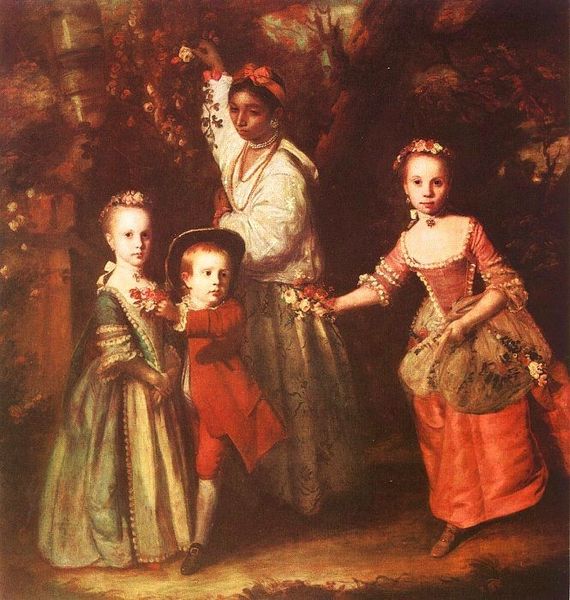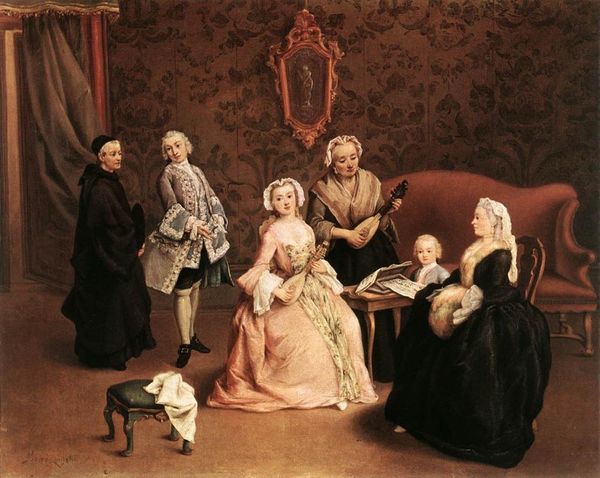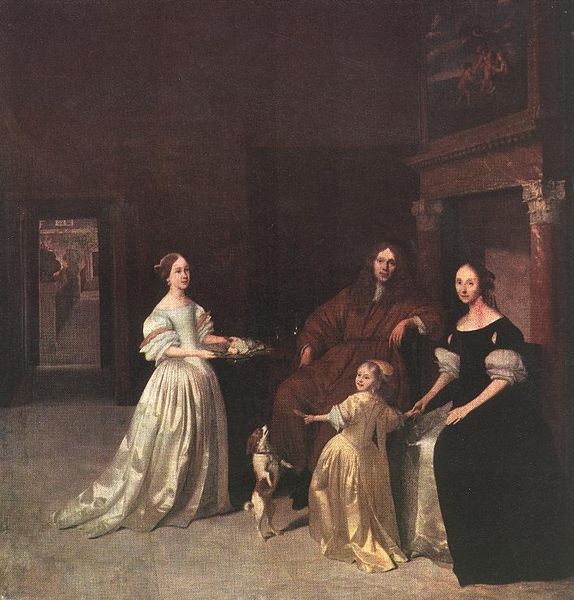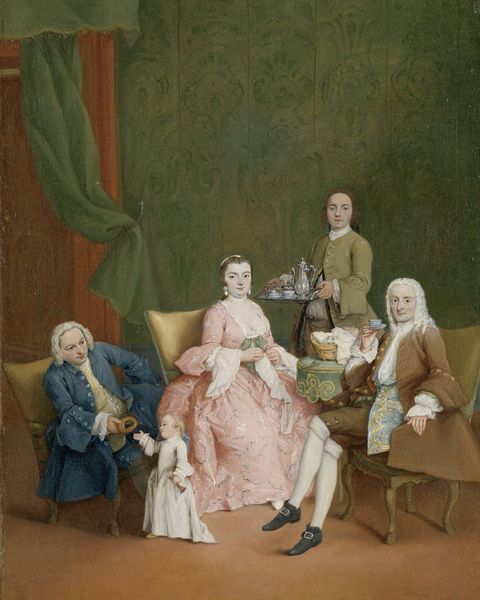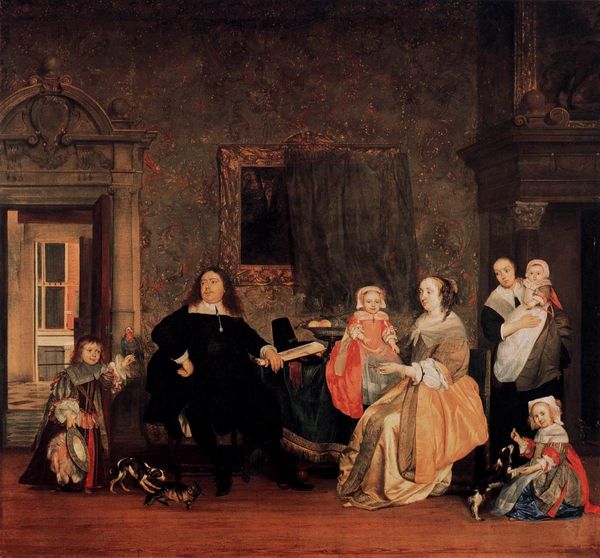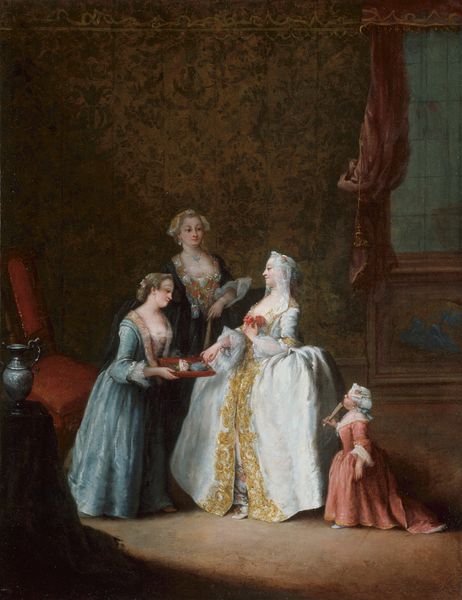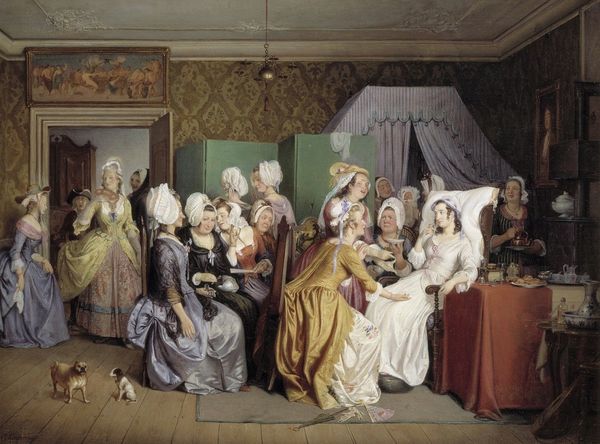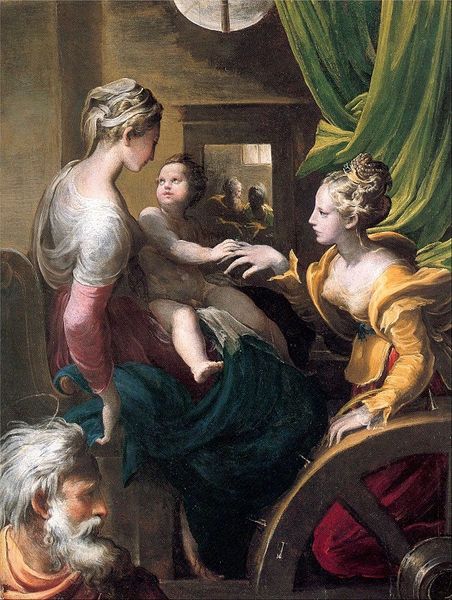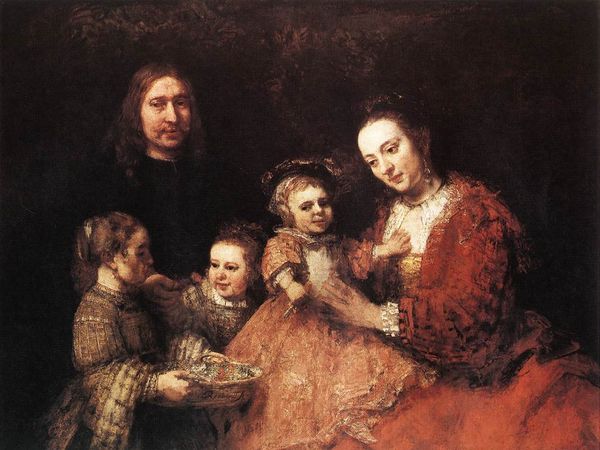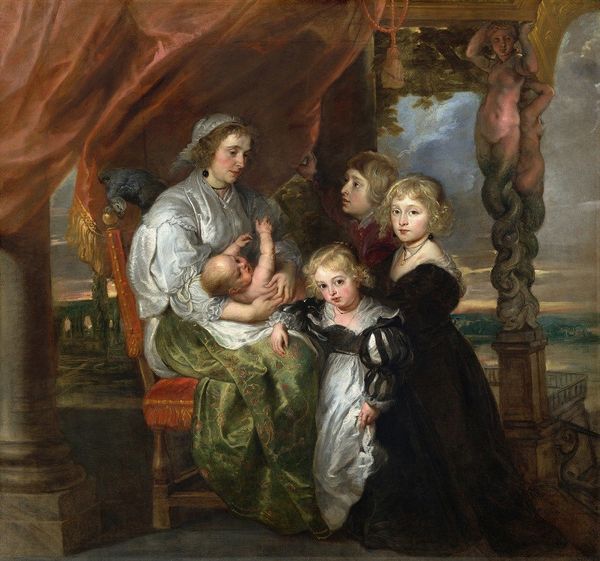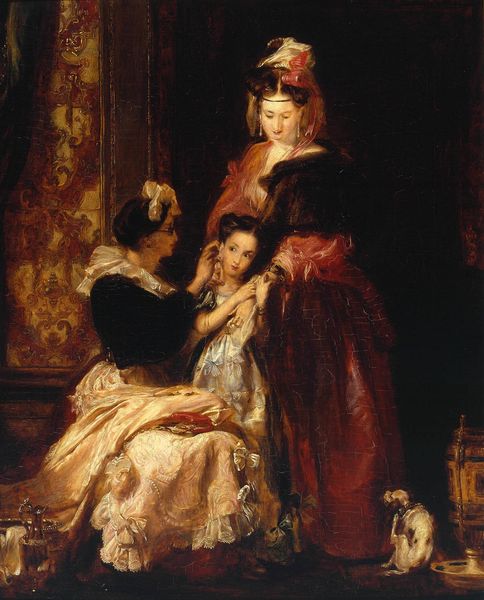
painting, oil-paint, textile
#
conversation-piece
#
portrait
#
painting
#
oil-paint
#
textile
#
figuration
#
group-portraits
#
genre-painting
#
miniature
#
rococo
Dimensions: 60 x 49 cm
Copyright: Public domain
Editor: This is "The Tailor," an oil on canvas painted by Pietro Longhi in 1741. It's fascinating how the fabric dominates the scene. What do you see in this piece? Curator: I see a theater of social meanings, spun from threads of desire and status. Consider the fabric itself, draped like a trophy – its rich, dark patterns whispering of faraway lands, of wealth acquired through global trade. It speaks volumes about the family’s aspirations and the power that textiles held as signifiers in 18th-century Venice. Editor: That’s interesting. It seems more than just about showing off wealth. There's something almost unsettling about how staged it all feels. Curator: Precisely. Notice how the figures are arranged: the tailor displaying the fabric, the servant presenting what appears to be millinery, the client gazing expectantly, the child mimicking adult rituals. Every detail is laden with symbolic weight, underscoring a society preoccupied with appearances. But, also, think about the mirror. What do you imagine its purpose is in this carefully crafted scene? Editor: To show even more opulence, I guess? Or, perhaps, it reflects the viewers and makes us a part of the play. Curator: Or maybe it's about the artist trying to highlight the transience of beauty. All of that display, inevitably fades with time. Do you see a subtle anxiety lurking beneath the Rococo surface? Editor: I do now! It's less a celebration and more of a… commentary. It makes me wonder how much of our own self-worth today is also tied to these outward displays. Curator: Indeed, the symbols may have shifted, but the human drama continues, doesn't it? This work reminds us that anxieties about appearance, about status, are deeply rooted in our cultural history.
Comments
No comments
Be the first to comment and join the conversation on the ultimate creative platform.

